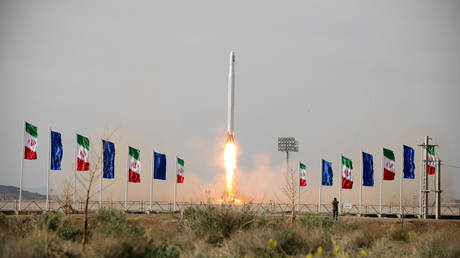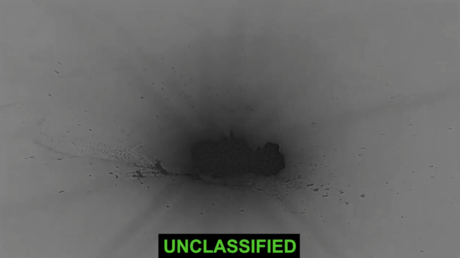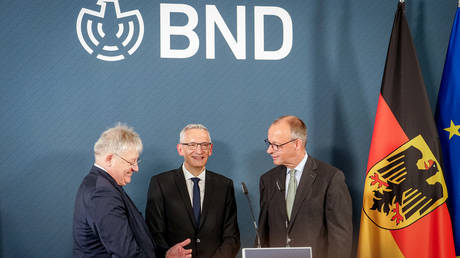
Strangled by America’s maximum pressure campaign, Iran was still able to send a military satellite into orbit, spelling the start of its space era. But from the US, the achievement will be met with only one thing: more sanctions.
Dubbed Noor (Persian for ‘light’), the military satellite was on Wednesday morning propelled to 425km above ground by a multi-stage rocket launched by the aerospace arm of the Islamic Revolutionary Guards Corps (IRGC).
Iran had been trying – and failing – to bring a satellite into orbit before, but the Wednesday’s event means much more than just one successful missile launch, analysts believe.
‘A sanctioned country CAN reach for the stars’
The Iranian government, which hailed the launch by saying it “can now observe the world from space,” has every reason to celebrate, believes Irina Fedorova, a senior fellow at the Russian Academy of Sciences’ Oriental Studies Institute.
The launch shows to the world that “despite a severe blow delivered by [the]coronavirus epidemic and [the]economic challenges caused by the sanctions, it finds ways to advance large-scale scientific and military projects,” Fedorova told RT.
Unlike other aspiring space powers, which either benefit from teaming up with the pioneers – Russia and the US – or go the safe route by paying for others’ technologies, Iran had to work on its own space tech while suffering from decades-old US sanctions and the “maximum pressure” policy.
“You can call it a feat of Iran,” Aleksey Leonkov, editor-in-chief of the Russian weapons and military magazine Arsenal Otechestva, told RT. He believes the device launched is a military communications satellite.
“Iran is working to solve its defense issues. It’s trying to protect itself from the existing military technologies that the not-so-well-wishing countries possess,” Leonkov said.
From the technological point of view, it also means that Iran has managed to build a rocket powerful enough to travel to space. Its engineers appear to have incorporated its military knowhow into the three-stage, space-worthy launch vehicle called Qassed (which means ‘messenger’), Mikhail Khodarenok, a retired colonel in the Russian Air Defense Forces and former general staff officer, told RT.
“It tells us that they do have a launch vehicle, albeit lightweight, and the satellite has been launched – so, if not a breakthrough, this is at least an achievement,” Khodarenok said.
But while the launch is part of the step-by-step development of Iran’s space program, the lines have historically been blurred between space and military tech – and Iran’s rivals would surely treat it as the latter.
‘They’ll find words to demonize it’
The rocket’s success is unlikely to get a positive feedback from the United States, which has long claimed that sending satellites into orbit is simply a cover for ballistic missile development. And it doesn’t help that Washington’s first such missiles – built upon the designs of the Nazi rocket scientist Werner von Braun – were meant for military purposes.
It is thus inevitable that the US will consider Noor’s launch “as yet more evidence proving Iran is an ‘evil state’ because the satellite has military applications,” Leonkov believes.
Moreover, Washington and its anti-Iran allies – Israel being the most vocal – could use the launch to justify new sanctions against Tehran and the IRGC, which the US has already designated a “terrorist organization,” Fedorova suggested.
The IRGC’s leadership wasn’t shy about showing off the satellite’s properties, saying it would give Iran leverage “in intelligence wars.” None of the world’s leading militaries has “a comprehensive defense plan without being in space,” the Guards’ chief Hossein Salami said.
It didn’t take long for US Secretary of State Mike Pompeo to point at the “terrorist” IRGC being behind the launch, inviting journalists at the Wednesday briefing to connect the dots.
“Iran needs to be held accountable for what they have done,” Pompeo said, telling other nations they should “go to the United Nations and evaluate whether this missile launch was consistent with the Security Council resolution,” which, in 2015, called on Tehran to refrain from ballistic missile development for eight years.
This presents a dilemma, as using military tech for space programs is hardly out of the ordinary for other nations, Khodarenok said.
Just as the famed R-7 rocket family that sent Sputnik and Yuri Gagarin into space was initially, at the height of the Cold War, meant to be an intercontinental ballistic missile, and the Atlas family of rockets was derived from the German V-2, which went on to become a deadly American weapon, much of the world’s space tech followed the same path of evolution. Now Iran is on its journey towards becoming a space nation and, while Khodarenok notes “it’s not there yet,” it, too, is using this tried-and-tested road.
Nonetheless, for Washington, the landmark launch only plays into the anti-Iran rhetoric that has sharply escalated under the Trump administration. On Wednesday, the president threatened to “shoot down and destroy” Iranian gunboats, should they harass US Navy vessels at sea – a remark showing that, at this stage, US-Iran tensions can only get worse.
Like this story? Share it with a friend!




